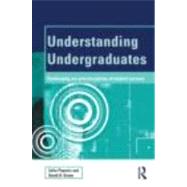- ISBN: 9780415667555 | 0415667550
- Cover: Nonspecific Binding
- Copyright: 5/4/2012
Most university teachers have ideas about the typical good or not-so-good student in their classes, but rarely do they share these thoughts with others. By keeping quiet about the presumptions ' or prejudices ' they harbour, teachers put themselves at risk of missing key evidence to help them revise their beliefs, and more importantly, they may fail to notice students in real need of their support and encouragement.In this unique work, the authors explore teachers' beliefs about university students' performance and expose which beliefs are well-founded, which are mistaken, which mask other underlying factors, and what they can do about them.At universities in the UK and USA, across14 academic disciplines the authors interviewed academic staff about what they believed about their students and then tested these beliefs against data provided by students. So is it true, for instance, that British Asian students find medicine more difficult than their white counterparts, or that American students with sports scholarships take their studies less seriously? Is it the case that students who sit at the front of the lecture hall get better grades than those who sit at the back? Who is right: the instructor who believes students with interests beyond their course do better, or the one who believes students should not spread themselves too thinly?By comparing students' their demographic data and their actual performance with their teachers' expectations, the authors have exposed a complex picture of multiple factors affecting performance. They contrast students' comments about their own study habits with their views on what makes a good learner, leading to clear advice on how academics can communicate effective learning strategies to students so that they not only take them on board, but also put them into practice. And the authors also explore the ramifications of teachers' beliefs to suggest realistic approaches designed to level the playing field so that students have a more equal chance of success.Ideal for staff educational developers and teaching staff the book: reveals general tendencies and findings that will inform developers' own work with university teachers, provides practical guidance and solutions for university teachers to be able to identify and address students' actual, rather than assumed, needs, explains an action research methodology that staff developers can use on their own campuses to unravel some of the local preconceptions that may be hampering student performance.






